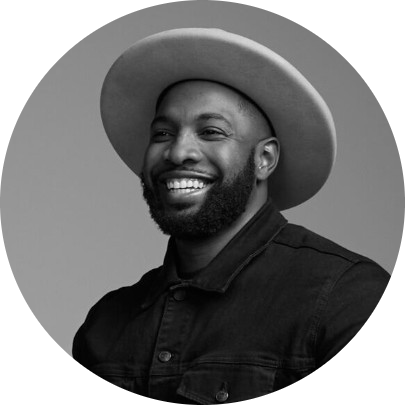‘Engagement baiting’: Is LinkedIn posting getting too personal?

LinkedIn is undergoing another evolution, for better or worse.
No longer a platform solely for one-dimensional business-like updates, the professional network has evolved over the years to become a place where people feel they can express both their personal and professional selves.
“It’s kind of like in the real world, the one way to stand out in your industry is to showcase your personality,” said Jackie O’Connnell, senior director of digital strategy at Mission North Agency and a LinkedIn specialist.
But there are some who may be taking that too far, with the result that the line between professionalism and personal updates has become so blurred it’s all but disappeared.
It comes as Twitter’s popularity has fallen drastically, particularly as a channel for professional networking, after its recent rebrand to X. It’s also driven by the rise of LinkedIn influencers or “top voices” and advice around the importance of personalization and trust when it comes to growing one’s network and building personal brands.
A post from business owner Bryan Shankman went viral recently for missing the mark with many users after he posted an engagement photo that started with: “I proposed to my girlfriend this weekend. Here’s what it taught me about B2B sales,” before launching into a list of guidance around “closing the deal,” “pricing” and “negotiations.”
Comments poured in questioning why someone would compare such a major life event to their business endeavors. “Sometimes I look at a LinkedIin post, and all I can think of is “Why here?” What kind of motivations make someone try to showcase sales, management, or software development principles in their love life, or interactions with their toddlers. I was really reading it hoping that it was an ironic take, but it wasn’t. The author really believes that it belongs on Linkedin,” one commenter wrote.
Shankman’s post isn’t unique — there’s a whole subreddit dubbed r/LinkedinLunatics dedicated to sharing strange posts, some from high-profile company leaders, that blend work and life experiences in a way that users say is distasteful, virtue signaling and sometimes evident of a lack of boundaries and work-life balance. But navigating how to create the perfect presence that blends both is something they’ll have to learn to do better given the direction the platform is headed, workplace experts say.
Similar to other social media platforms, content posted from personal pages rather than brand pages typically garners higher views and engagement, said Amelia Sordell, founder of Klowt, a personal branding agency.
That’s because “people care more about personal content than they do brands. Because brands lie. Brands lie about their customer satisfaction, about their employee engagement and also about the way they run their company — it’s why Trip Advisor exists, and Glassdoor,” she said.
Most welcome the shift LinkedIn has taken, with people bringing more personality and emotion to their posts, and some sharing vulnerabilities or personal challenges they may have experienced throughout their careers. That’s led to an altogether richer LinkedIn experience. Yet there has been a marked rise in posts that tenuously link personal and professional narratives to drive clicks, social media experts say.
Sordell herself is a LinkedIn top voice and has built her entire business off posting both personal and professional posts on the platform, she said. It’s crucial to include both sides, as “you are a person even when you are at work,” she said.
Creators on LinkedIn today need to consider two key aspects about their posts: the value of what they are providing and the intention behind them, said Elfried Samba, cofounder and CEO of agency Butterfly 3ffect. He’s also a top LinkedIn creator and his account posts typically get millions of impressions weekly.
In its earlier years, LinkedIn was almost exclusively used to post about work, serving “like a virtual CV,” he said, with posts primarily about new job opportunities or leaving current roles. But keeping it strictly professional led to a lot of blatant self-promotion and eventually stopped providing much value to users. Sharing more personal information is now a tool to make interactions on the site more valuable in terms of networking and ultimately brand building, he said.
And after years of social media use, users are smarter now, paying closer attention to the “why” behind certain posts. “It’s all about making sure that the intention of your content is actually genuinely to help somebody else,” he said. “People are just so savvy that we can realize what you’re doing, you’re engagement baiting,” he said.
O’Connnell said her agency has shifted its strategy to have a heavier focus on clients’ LinkedIn presence in the past year as the platform has grown, along with competition to stand out on the site, she said. In the past high profile CEOs might have had their tweets ghostwritten, but now it’s their LinkedIn posts.
But she cautions against using it like any other social platform, as its professional focus is a key part of the site’s purpose that isn’t going away anytime soon. “Value on LinkedIn is different from value on Instagram or value on Facebook. Value on LinkedIn is professional value,” she said.
Instead of treating it like any other social platform, users should lean into the storytelling aspect Linkedin provides but ensure those stories hit on narratives around professional growth and development to ultimately build authenticity while staying on topic and not trying to make connections that simply aren’t there.
“I think personal posts on LinkedIn underscore the fact that we are not all robots getting jobs,” said Bryan Gentry, director of communications at the University of South Carolina College of Arts and Sciences.
Gentry recently wrote a LinkedIn post marking the sixth anniversary of his father’s death, reflecting on some career lessons he learned from his father’s life. He shared thoughts about his father’s struggle with feeling discouraged as a failed entrepreneur, but also how the loss highlighted his father’s small economic impact overall and how it ties into concerns around AI replacing humans in the workforce.
While it had almost nothing to do with Gentry’s own role in communications, his coworkers connected with it. “In my next meeting with my boss, he thanked me for writing the article and shared that it brought tears to his eyes. He and I both lost our fathers in recent years, but we’d never really talked about it until that post,” Gentry said.
The endless LinkedIn posts about new jobs was getting to be a bit much, he stressed. “I think many people see social media as a place where we can venture into some personal discussions that humanize the experience,” he said.
“Personal posts help to reveal us as people rather than a brand. I have noticed that my more personal posts get a lot more views and reactions than most things related to my work,” he added.



